Everyone knows that aquarium aeration is an important part of keeping a fish tank healthy. But why is that? Does your tank have enough aeration of the right kind – or have dissolved oxygen levels become a problem?
Let’s take a look at the role of oxygen in fish and how to increase oxygen in a fish tank!
Understanding the Role of Dissolved Oxygen
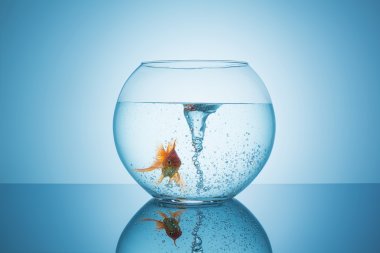
Oxygen is essential for most aquatic life. Fish need it just like we do to fuel their metabolic growth processes. Oxygen is like fuel for a fire, and without it, that flame will quickly burn out. You likely also know that plants provide oxygen – but they also consume it at night when the lights go out!
So how does the oxygen in a fish tank get there in the first place?
The atmosphere is by far the most important source. It is around 1/5th pure oxygen, making it a huge reservoir of the gas for life all over the world, put there by plants and algae. Using light, they continually create more by cracking apart carbon dioxide (CO2) and water (H2O) molecules. They use some of the molecules to create simple sugars for food and discard the remaining oxygen back into the air, which animals then inhale!
Ensuring your aquarium water has enough oxygen is an important part of keeping your pets alive and thriving. Too much oxygen is rarely an issue. It is possible to increase oxygen levels beyond what a particular temperature would normally carry; this is called supersaturating the water. But this can only really be done using a lot of turbulence and a cold water temperature, which will be even more stressful for your fish.
Signs Your Oxygen Levels are Too Low
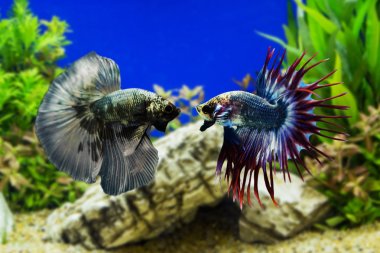
Since oxygen is invisible, how can you tell if your tank has a low oxygen supply? Unfortunately, unless you have a dissolved oxygen test kit, it is almost impossible to know for sure.
But the best way to tell is to simply watch the way your fish breathe and their behavior. Gasping for air near the surface, labored breathing, and continual slow swimming are all signs that there is less oxygen in the water than there should be.
You should also know a little about your particular fish. Surface dwelling fish like hatchetfish, arowanas, and African butterflyfish aren’t gasping for air most of the time. They simply prefer swimming right near the top of the tank.
Bettas and gouramis intentionally take a gulp of air every few minutes, even in aquariums with high oxygen levels. They have evolved a specialized organ, the Labyrinth Organ, that is effectively a primitive lung!
In their Southeast Asian homeland, bettas and gouramis are found in hot, stagnant water full of rotting vegetation. The combination of heat, bacterial action, and lack of water movement means that most fish can’t survive in these places.
Yet, these areas are where mosquito larvae and other tasty bugs tend to thrive. Their labyrinth organ allows them to consume oxygen directly from the air and thrive in an environment where few other fish can compete with them! It’s also why bettas can live in small bowls for so long.
Lastly, be on the lookout for a rotten, sulfurous smell. Anaerobic (oxygen-hating) bacteria thrive in low oxygen environments. When they decompose organic matter, they create hydrogen sulfide (H2S), which has a distinct aroma like old eggs. That smell is a sign that you need to somehow increase oxygen (and circulation) in your aquarium water.
How to Increase Oxygen in Fish Tank?
Surface Agitation
The simplest way to increase dissolved oxygen levels is to agitate the surface. “Agitate” is a fancy word for moving and splashing: forcing air into greater contact with the water, which causes gas exchange to happen faster.
River rapids and the area immediately downstream of waterfalls are the most oxygen-rich environments for fish precisely for this reason.
The water can even become supersaturated with oxygen, holding more than you’d expect for the temperature. Trout, salmon, freshwater clams, and other organisms thrive in these conditions and are indicators of clean water loaded with oxygen!
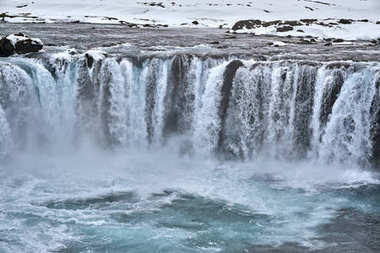
Since a waterfall is probably beyond your budget, here are a few ways to simulate this process in your fish tank!
Using Powerheads On Your Aquarium
Powerheads are slightly more common for saltwater fish keepers because the water movement is handy for growing many specialty corals that need current to clear mucus and find food. But freshwater aquarists can also take advantage of a strong powerhead!
Water movement is useful for giving fish a force to work against, providing them with exercise, and simulating the rivers and streams that many fish species naturally call home. But if properly placed near the surface and angled to agitate your tank water, a powerhead can raise the oxygen level of even warm water by forcing air into contact with it!
A powerhead runs continually, but they tend to be extremely quiet thanks to their magnetic impellers, which are further muffled by the water. The water circulation they create also improves the distribution of both oxygen and heat by ensuring no region of the tank is uncirculated. This is an especially big problem for larger tanks with filters that don’t provide enough flow.
Hang On the Back Filter
Since an aquarium is cut off from the immense volume and biological processes that keep wild animals healthy, all aquarium fish need filtered water for good health. Your filter outlet not only returns purified water to the tank; it also creates surface agitation in the right conditions.
The filter output can be controlled in most models with dials that control the flow rate. Setting the flow to maximum will create a powerful current that may also be directable with your model.
Some power filters use a simple return ramp, while others can be adjusted in any direction. If you can set the unit up so that it sends water along the longest axis of the fish tank, you can maximize surface agitation and how oxygen levels are thereby improved!
Using an Air Pump
An air pump and air stone are a classic combination for several good reasons. As air pumps operate, they force air through tubes that connect to ceramic air stones.
Extremely fine air bubbles are then created that facilitate gas exchange across their surfaces. It’s essentially the same kind of oxygen exchange that happens at the surface. In this case, the “surface” is thousands of microbubbles beneath the surface!
There are a few advantages to doing things this way. For one, air pumps create a current that circulates water from the bottom to the surface. This current ensures that oxygen levels in all areas of the tank are as saturated as possible. Without this turnover, oxygen levels tend to be higher near the surface and drop off along the bottom.
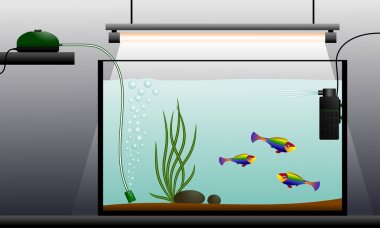
Water can more readily release carbon dioxide contained in it as well. After all, it’s not enough to simply increase oxygen without simultaneously removing CO2.
By the way, a battery-powered air pump is one of the best affordable backup options for fish tanks that you should keep on hand. Thunderstorms, snowstorms, and other inclement weather events that knock out power for hours or days can lead to death in a fish tank with too many fish.
Getting oxygen in your fish is paramount, so having an air pump that doesn’t need power is very handy.
Live Plants and Oxygen

Adding live plants to your fish tank is a very effective way to directly get more oxygen into the water. Plants are like living filters, sucking up carbon dioxide and using it to build their stems and leaves.
As they photosynthesize, they release oxygen as a waste product, which fish need to breathe properly. They also consume ammonia, nitrite, and nitrate as fertilizer!
The only real downside is that plants do have specialized care needs of their own, and if you aren’t familiar with them, they can easily die. Bright full-spectrum lighting is the most important thing plants need.
Without it, they won’t produce oxygen and will simply decay and die. Plants also need elements like iron and potassium, many but not all of which can be found in fish waste.
Aquariums with a Larger Surface Area
There is an important aspect to choosing a fish tank that few aquarists consider. Did you know that the design and shape of your aquarium have a dramatic effect on how much oxygen your fish take in? This is all thanks to the water’s surface.
As I explained earlier, the water surface is where carbon dioxide leaves and oxygen enters the water. If your aquarium’s water surface is smaller relative to its volume, as it tends to be in “high” and “tall” designs, then the tank will not hold as much oxygen as a standard or “long” design.
If you heavily stock both a 20 gallon “high” and a 20 gallon “long,” you would need to increase surface agitation moreso in the “high” design because it has less surface area. Fancy cylindrical tanks have even more problems with low oxygen levels if you don’t create surface agitation.
A “breeder” style aquarium is the best fish tank to keep oxygen levels high because it is designed to maximize floor space for substrate spawners like cichlids. Since the opening of the tank mirrors the bottom, you have a nice, wide tank for the same volume!
Water Temperature Control
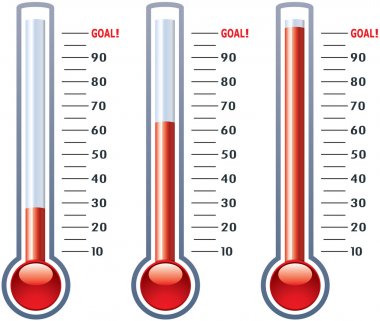
Believe it or not, the temperature of the water has a strong effect on the amount of dissolved oxygen it can hold. The cooler a body of water is, the more oxygen it can contain. On the other hand, oxygen levels drop off as temperatures rise. This graph by the USGS demonstrates this readily enough.
Oxygen concentration drops off in warmer water because the gas isn’t all that soluble in water. Despite the atmosphere being 21% oxygen, the dissolved oxygen content of water is far lower.
A given water sample will hold around 3% of the oxygen contained in a similar volume of air at the same temperature. Water is around 1000 times denser than air at the same temperature as well; this density allows it to better contain the oxygen molecules that do diffuse into liquid water.
This process is the foundation behind the gas exchange that occurs near the surface. But oxygen really doesn’t want to stick around; most of it eventually goes back into the air. And the warmer the conditions, the faster the water and oxygen molecules are moving. All of this jiggling about causes the oxygen level to drop because the molecules are moving that much faster.
If you’ve ever seen fish gasping for air at the surface on a hot summer day, you’ve directly seen the result of low oxygen conditions caused by warmth. Direct sunlight can also transmit heat into a pond (or aquarium), driving off too much oxygen for fish to survive.
Keeping your aquarium on the cooler side and out of direct sunlight can help the tank absorb oxygen and hold onto it more effectively.
If you’re keeping tropical species, the warmth is more important – so don’t keep the tank so cool that they become stressed. But most popular species do just as well at 74°F as they would at 80°F. The cooler temperatures also allow you to use less electricity in the process!
Aquarium Carrying Capacity

The last way to ensure that your fish don’t encounter low oxygen levels is to not overstock the aquarium. The more fish you have, the more oxygen they need to remain healthy. If your tank is also too warm and not getting enough agitation or water turnover, then it is very likely you will see signs of stress at times.
Too many fish also causes problems with ammonia, feces, and other issues that require more power filters extra water changes. You’ll also see more territorial aggression from fish forced into constant contact with one another. So make sure to give your fish a little extra “breathing room!”
Conclusion
Marine and freshwater fish need ample amounts of dissolved oxygen to remain healthy. This can be provided in several ways, including an air pump, live plants, the outflow of your filter, or powerheads. You can also carefully monitor the water temperature, so the heat doesn’t drive off what dissolved oxygen you have.
And even the design of the fish tank you choose will affect the oxygen-carrying capacity! It’s worth taking some time to think about ways to maintain or increase oxygen levels for your fish. And hopefully, this guide gives you a good idea of just how to do so!
Related Frequently Asked Questions:
- Are there tanks that clean themselves?
- How do you clean a fish tank?
- Can fish see in the dark?
- What’s the difference between saltwater and freshwater aquariums?
- How do you take care of a Longhorn Cowfish?
- Can Fish Tanks be Over Filtered?
- Why Do Fish Jump Out of Tanks?
- What Fish Can Live With Turtles?

